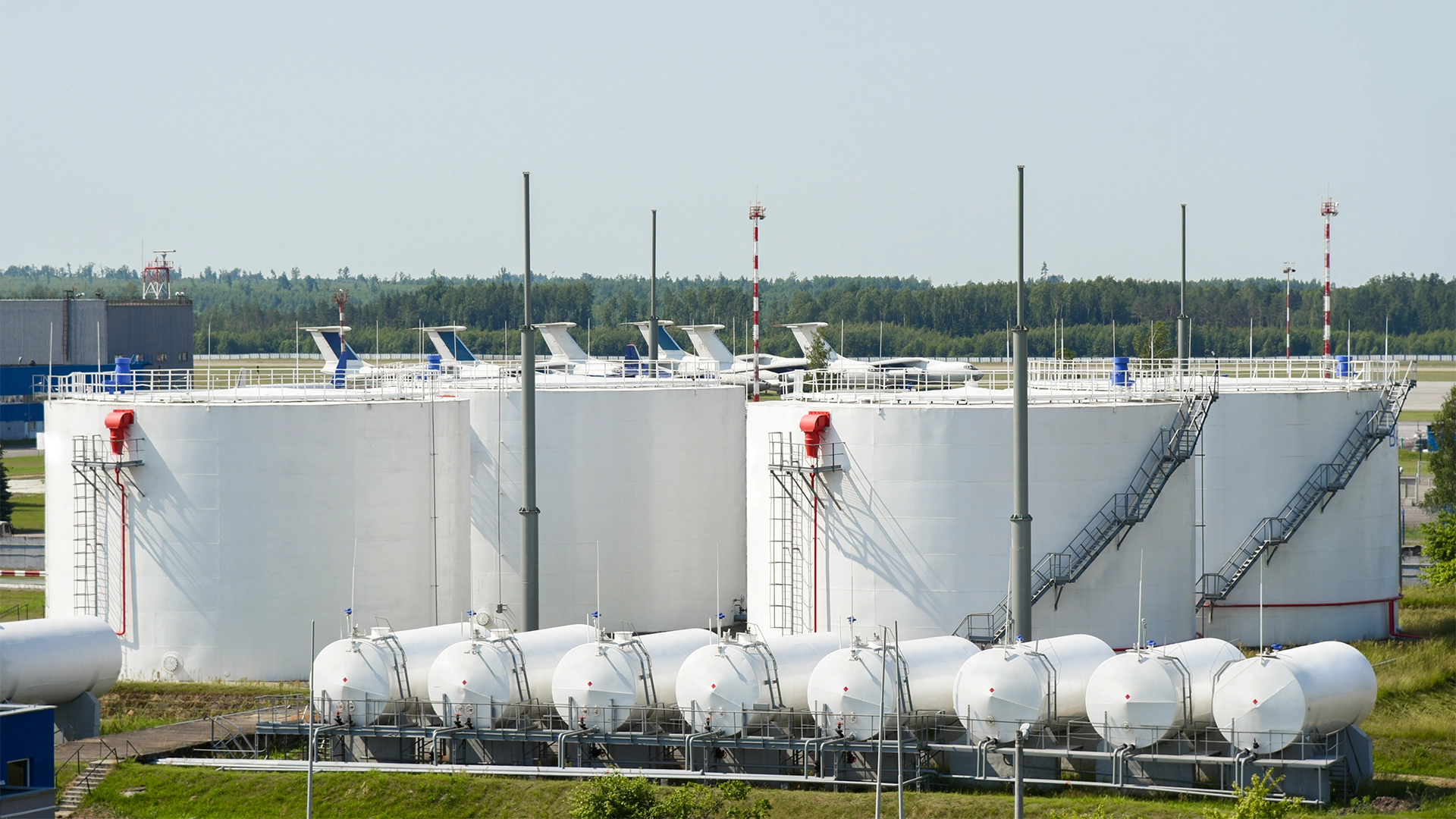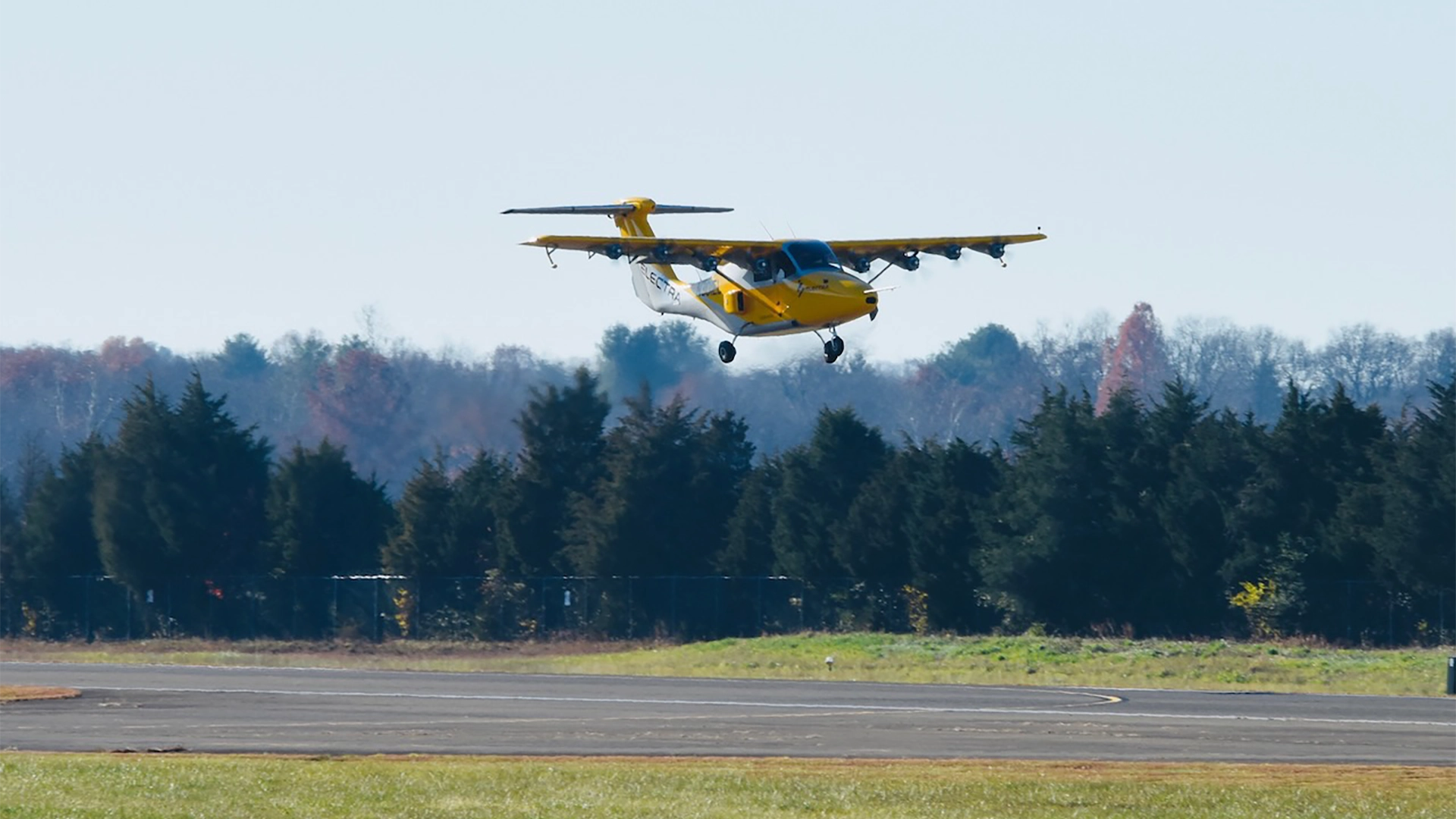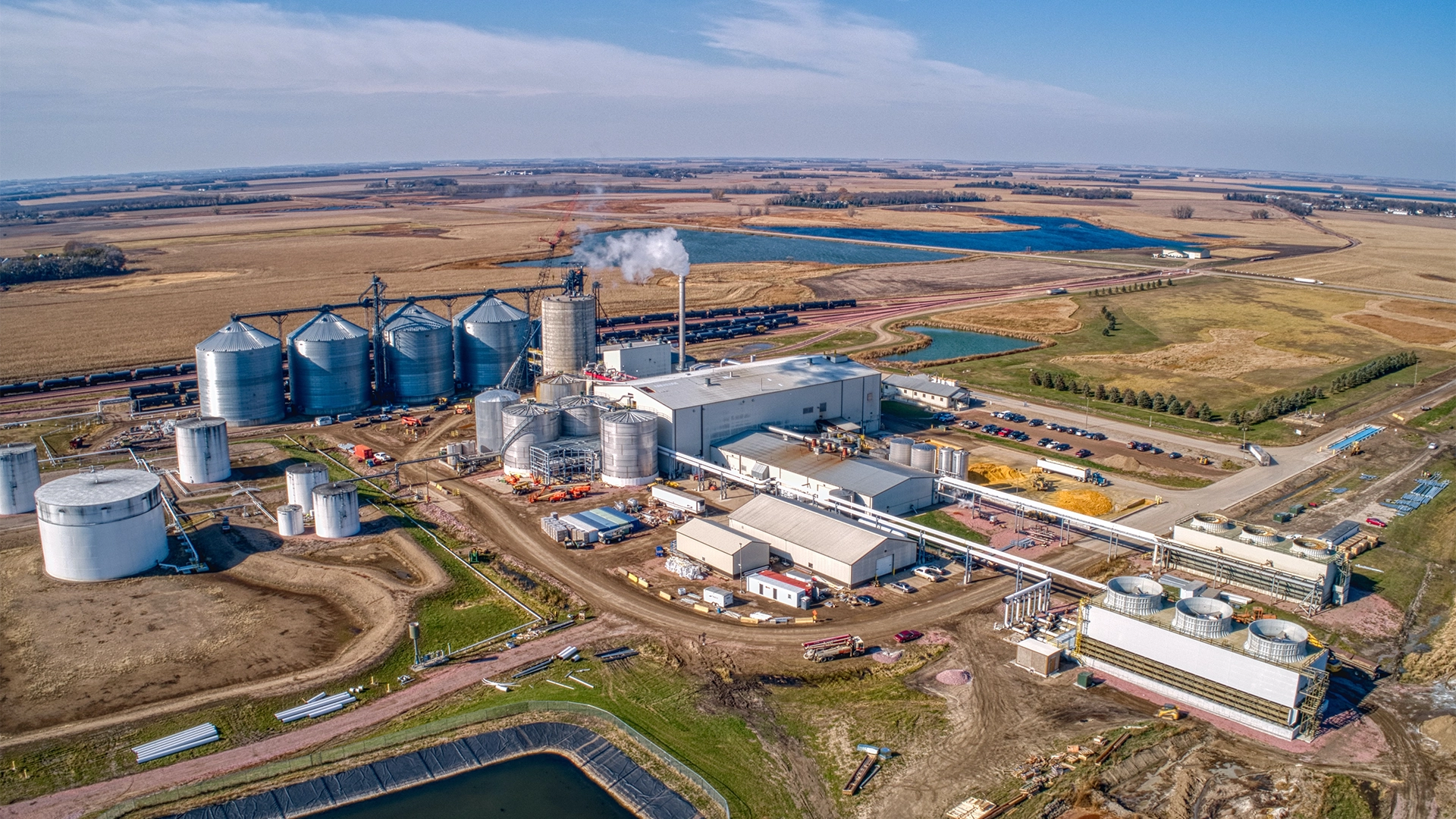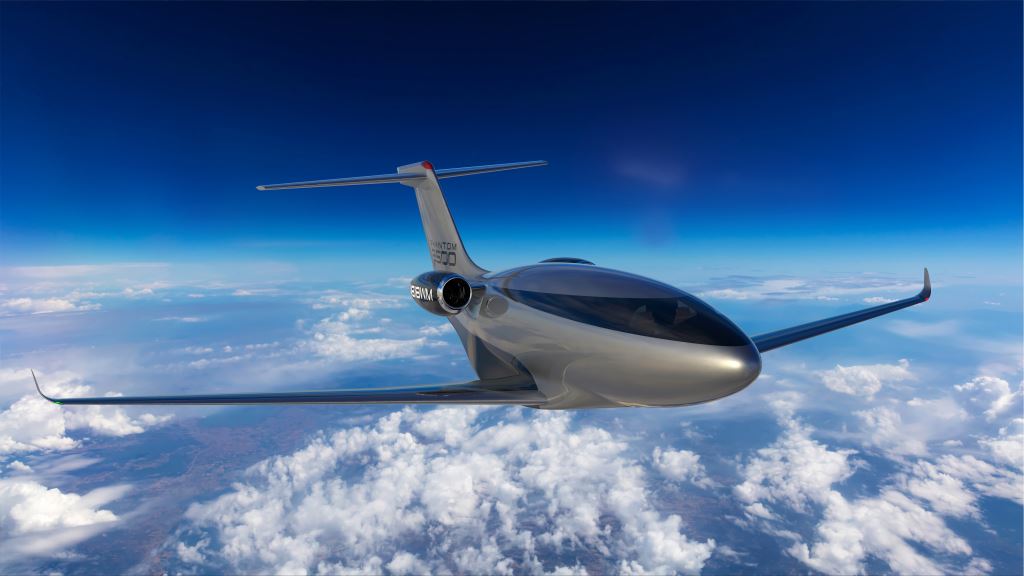
A new, clean-sheet business aircraft design now in development by U.S. startup Otto Aerospace aims to bring unprecedented efficiency and sustainability to the super-midsize segment, also while looking like nothing else on the airport ramp.
From the outside, perhaps the most striking visual aspect of Otto’s all-composite Phantom 3500 is its lack of cabin windows. Instead, high-definition screens along the cabin walls can display real-time images from outside the aircraft, or a series of environments tailored to the passengers’ tastes, with inset displays for inflight entertainment, moving map and video conferencing.
This week, Otto announced its first fleet customer for the Phantom 3500 will be on-demand business jet operator Flexjet, a move reflecting business aviation’s goal of achieving net-zero carbon emissions by 2050 and aligned with the industry’s CLIMBING. FAST. advocacy initiative.
Phantom’s Reduced Drag Means Lower Aircraft Emissions
A major factor contributing to the aircraft’s efficient design is its smooth outer surface that facilitates laminar airflow, reducing turbulence over the wings, airframe and empennage. The result is what the company calls “the most aerodynamically efficient aircraft ever,” offering transcontinental range and performance comparable to much heavier and thirstier business jets.
“Simply put, laminar flow reduces the energy needed for flight,” said Scott Drennan, Otto’s president and chief operating officer, who joined the company in 2022 following a longtime aerospace career at companies including Bell Flight.
The targeted 30% reduction in aerodynamic drag has an exponential effect on overall efficiency, “translating directly to a much smaller carbon footprint,” Drennan continued. “We need less engine, which uses less fuel. That means less structure, which means less weight.
“That converges on a design that weighs about 19,000 pounds yet is highly competitive with aircraft weighing more than twice that,” Drennan added.
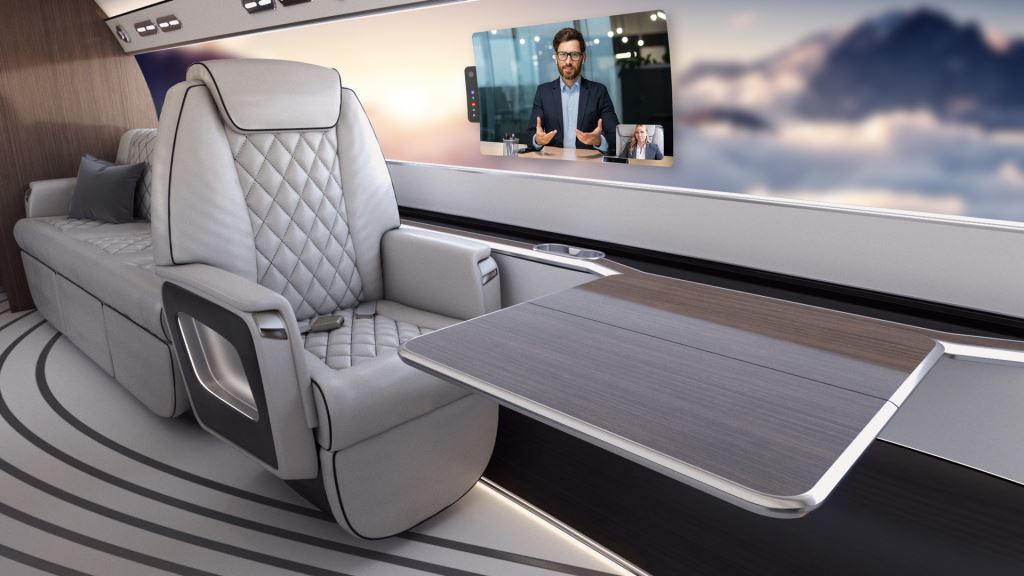
The company estimates the Phantom 3500 will burn about one-third of the amount of conventional Jet A needed for typical super-midsize aircraft.
“That alone is great for enhancing sustainability and reducing your carbon footprint,” Drennan added, “but the economics now enable you to add sustainable aviation fuel (SAF) for a cost that, while more expensive per-gallon, is still significantly below what’s required for the super-mids that you’re competing against.”
Unlike conventional, tube-shaped aircraft fuselages, the Phantom 3500 utilizes an elliptical cross-section yielding 800 cubic feet of cabin space and room for a 6-foot-5-inch passenger to stand upright. The aircraft is also designed to operate at altitudes up to 51,000 feet, well above nearly all other traffic and outside the “contrail zone” where water vapors and engine emissions rapidly freeze and become artificial cirrus clouds.
Otto Aerospace Chose to Go Bigger
The Phantom 3500 follows Otto Aerospace’s initial Celera 500L prototype, which entered flight testing in 2019. That aircraft sported a similar elliptical fuselage cross-section and laminar flow airframe, powered by a diesel piston engine turning a single, pusher-mounted, five-bladed propeller.
While the company initially planned a commercial variant of the Celera 500L, Drennan said they soon identified a larger potential market among turbofan-powered aircraft. “By moving up to the super-midsize class,” he added, “we knew we could perform coast-to-coast missions with a customer experience superior to even the largest, 40,000-pound [maximum takeoff weight] aircraft in this class.”
Drennan noted the company gained crucial experience for predicting laminar flow with the Celera 500L, while also learning how to build an aircraft. “When I was sent out to go look at the company, I found two things: a technology that worked, and a very scrappy, capable team that knew how to put an aircraft in the air and keep it safe,” he added. “And they were a great foundation for us to take into the more formal program.”
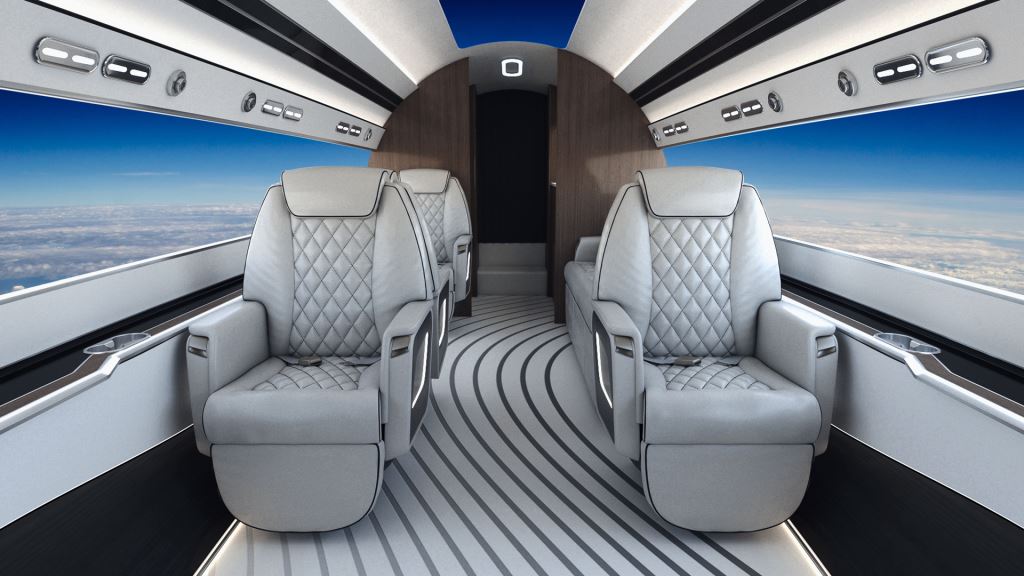
Phantom 3500 Includes Familiar Underlying Systems
While many aspects of the Phantom 3500 design are unique, Drennan noted its underlying systems will be familiar. “We’re using Williams FJ44 turbofans, which have 13 million hours of use throughout the fleet,” he said. “We’re looking at Garmin avionics and other systems proven in use on other aircraft. That reduces our risk.”
In fact, Drennan added, the company’s familiarization meeting with the FAA earlier this year drew a surprising statement from the agency. “The FAA noted there was nothing new and novel on the aircraft, which stunned me for a minute,” he said. “But it was only for a minute, because that statement acknowledged we’re building upon a strong foundation for certification.”
In addition to carrying passengers, Drennan noted the Phantom 3500 offers advantages to cargo transportation and medevac operators who can take advantage of the aircraft’s wider cabin. “It’s voluminous,” he said, “and it puts space in configurations that you’re not accustomed to.”
Otto currently plans to fly a production-conforming flight test vehicle in the second half of 2027, with three subsequent aircraft used for testing toward FAA type certification and initial deliveries in late-2030 and into 2031.
“I want to create engineering marvels that serve our society,” Drennan concluded. “Our industry gets beaten up a little bit about their sustainability behavior, but I think we can give people a great option there and still give them the performance, the space and the range that they need for the mission that they have on their aircraft today.”


